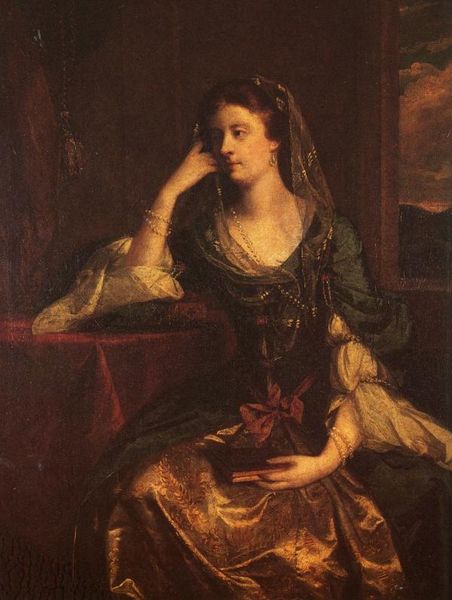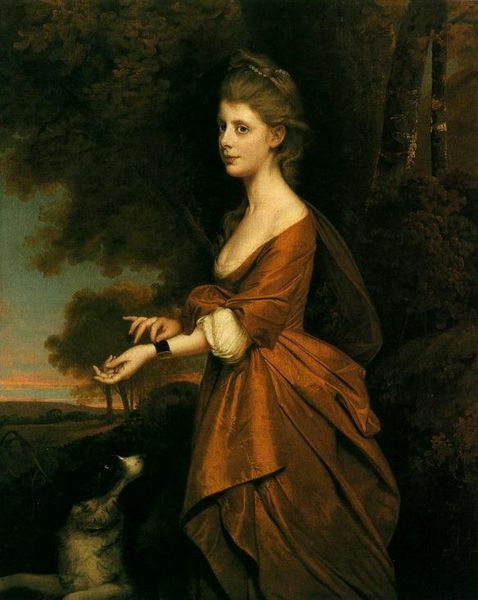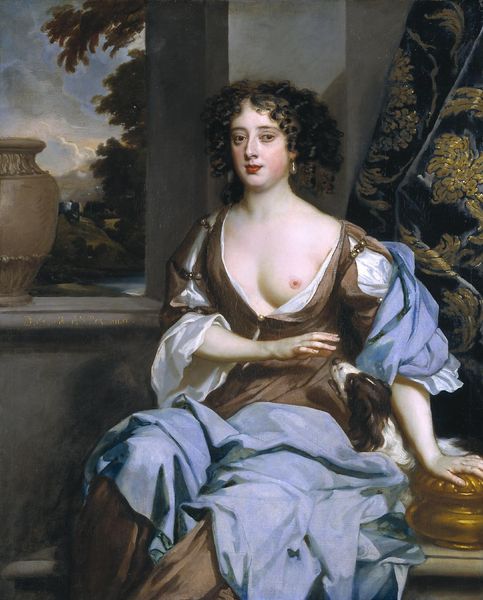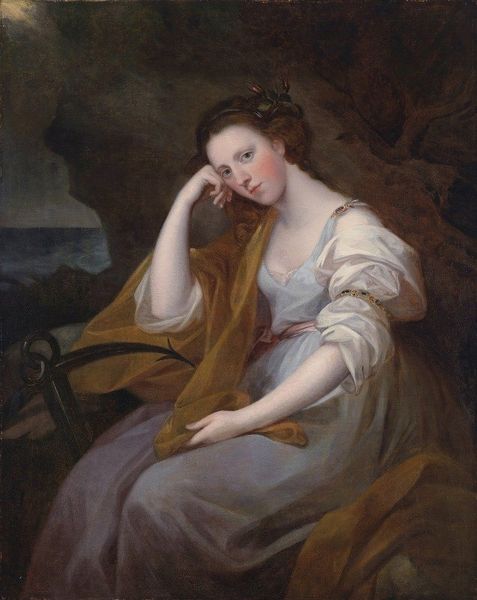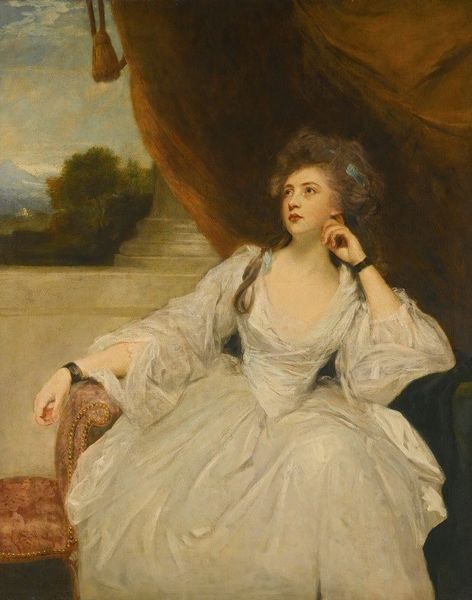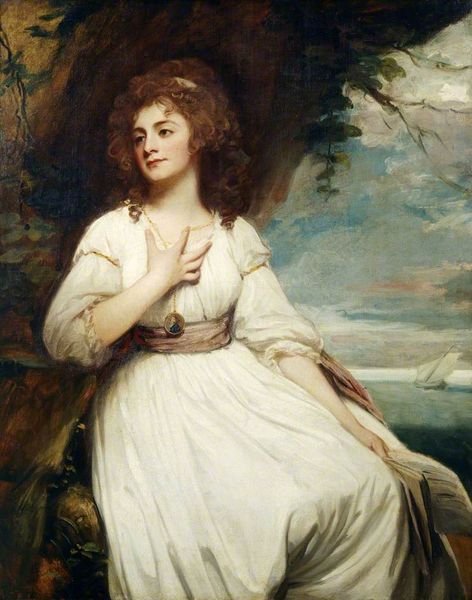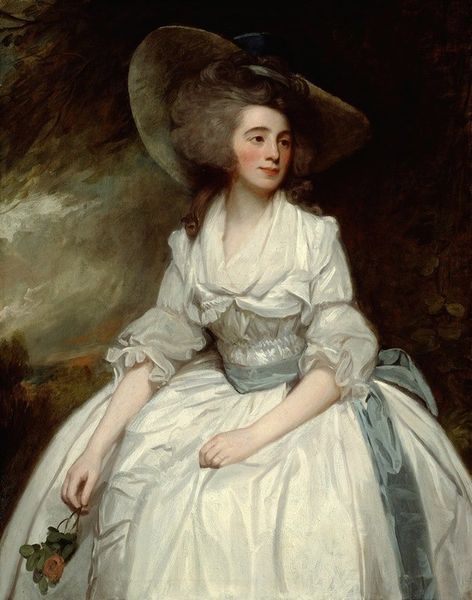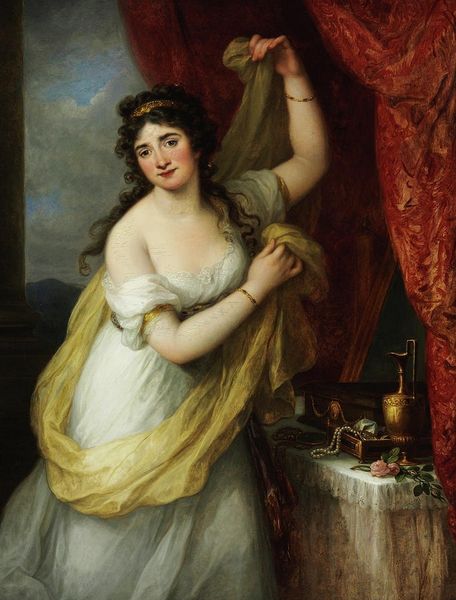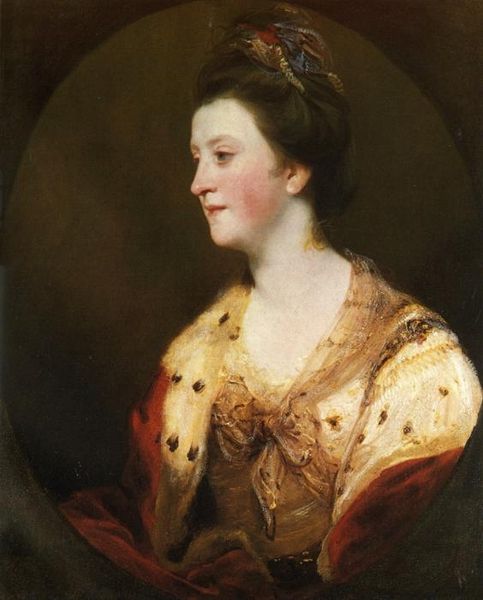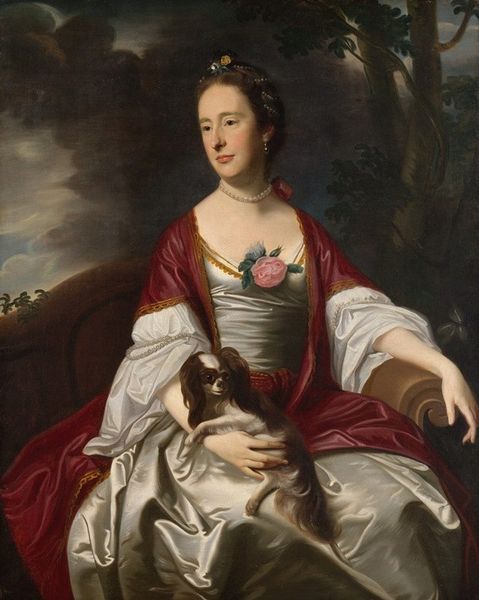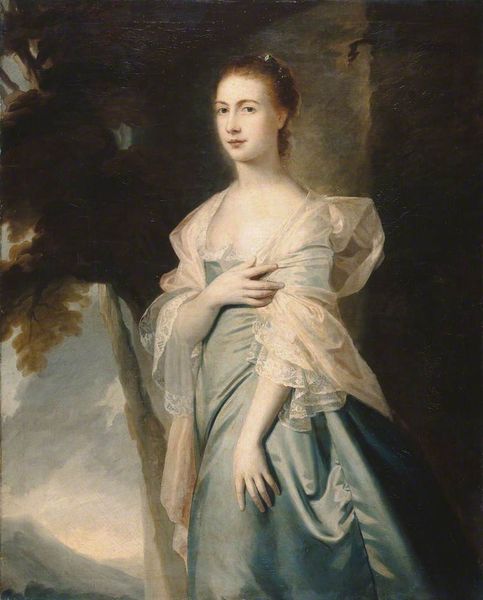
painting, oil-paint
#
portrait
#
character portrait
#
baroque
#
painting
#
oil-paint
#
history-painting
Copyright: Public domain
Editor: This is John Riley’s portrait of "Anne Morice of Wirrington," painted around 1665. It’s oil on canvas, and I’m struck by the subject’s detached gaze and the almost theatrical, dreamy setting. There is so much to unpack. What catches your eye in this piece? Curator: Ah, yes, Anne Morice, a woman framed by whispers of classical allegory and whispers of...well, is that a little garden gnome hiding near the putti on the right? No, just some mischievous marble work, I suspect. More seriously, notice the light; it doesn't so much illuminate as caress. And her gaze! It pierces, doesn't it? As though she sees right through the artifice. Editor: It does feel quite staged. Do you think she had much say in how she was depicted? Curator: One wonders. The Baroque was all about the drama, wasn't it? Everything heightened. But Riley... I suspect he enjoyed hinting at the individual within the formal conventions. Does she look comfortable? Confident? Perhaps. But is there a shade of defiance, even melancholy? Look closer, and tell me what stories *you* think her eyes are trying to tell. Editor: Now that you mention it, I see a touch of… wistfulness, maybe? It’s like she’s playing a part but isn’t entirely convinced by it. I love how the garden statues create another world within the world. I hadn’t noticed them so much until now. Curator: It is, isn't it, a story within a story. Riley offers us a glimpse behind the facade, reminding us that even in grand portraiture, a little human mystery persists. It's a delicious bit of subversion if you ask me!
Comments
No comments
Be the first to comment and join the conversation on the ultimate creative platform.

